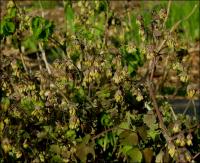Description
OUT OF STOCK
Hanging chartreuse blooms dangle from the stems in spring
Chartreuse blooms in spring
OUT OF STOCK
Hanging chartreuse blooms dangle from the stems in spring
Powder-blue flowers of terminal clusters in early summer; feathery, thin,”threadleaf” foliage turns caution-sign yellow in fall.
Size: 2-3’ x 2-3’
Care: sun to part shade in moist well-drained soil
Native: Central-So, US
Wildlife Value: attracts butterflies & bees
Awards: Plant of Merit, Pennsylvania Horticultural Society Gold Medal
Collected in 1940 in Yell County Arkansas along a stream 3 miles west of Birta.
“…the berries are the thing – pewter in color, with a texture like those Fourth of July sparklers of childhood memory, they have a delicious fragrance.” Allen Lacy.
Size: 9’ x 10’
Care: sun in any soil
Native: Canada to Southeastern U.S. No pruning needed but can be pruned at any time of year, if desired.
Wildlife Value: Berries relished by chickadees, red-bellied woodpeckers, swallows, Titmouse, catbirds, bluebirds, Northern flicker & yellow-rumped warblers. Bayberry thickets also provide nesting sites for songbirds, offering excellent protection from predators.
Size: Fragrant leaves used for potpourri, abundant berries used to make candles. Good road-side plant, salt tolerant.
Probably 1st collected for gardens by John Bartram (1699-1776). Offered for sale in Bartram Garden’s 1783 Broadside, America’s 1st plant catalog. In 1800’s considered “very ornamental in the shrubbery.”
**LISTED AS OUT OF STOCK BECAUSE WE DO NOT SHIP THIS ITEM. IT IS AVAILABLE FOR PURCHASE AT OUR RETAIL LOCATION.
OUT OF STOCK
SHRUB Boxwood
Size: 24” x 30”
Care: Light to Part shade in well drained, alkaline soil. Do not crowd with other plants, roots prefer no competition. Fertilize regularly for dramatic growth. Prune in early spring. Unlike English boxwood this can be pruned back hard. One of a few shade tolerant evergreens and deer resistant too. Also the most hardy Boxwood.
Introduced from Asia to American and European gardens around 1900 by Ernest Henry “Chinese” Wilson (1876-1930) who scoured Asia for plants.
Violet racemes all summer through fall
Size: 36” x 12”
Care: Sun, well-drained soil
Native: Southern Europe
Both the Latin and common names are related to flax. Linaria comes from “linum” which is Greek for “flax” and toadflax includes the word “flax.” The leaves of Linaria purpurea resemble flax leaves. According to 17th century English herbalist, John Parkinson, the plant “causes one to make water.” Grown by English plantsman and explorer, Tradescant the Elder, 1634.

